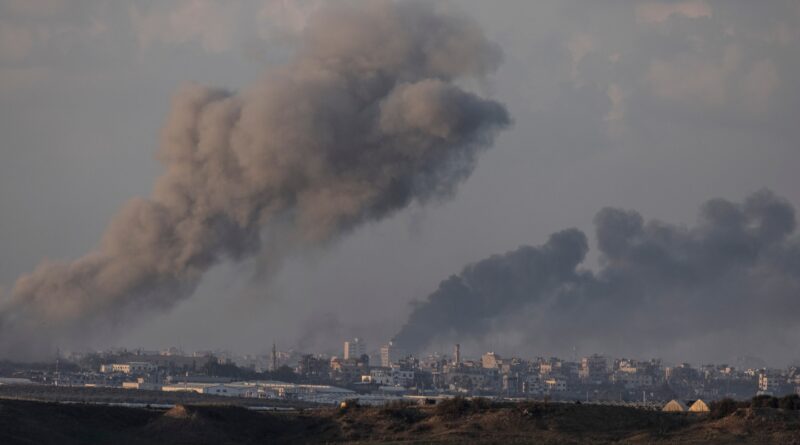More than 20,000 dead in Gaza, a historic human toll
The Gaza Health Ministry said early Friday that 20,057 Palestinians have been killed in Israeli strikes since Oct. 7.
The number of deaths is far higher than in any conflict in Gaza in recent history. And it is higher than the estimated 15,000 Palestinians killed in the violence that followed the 1948 Arab-Israeli war, according to the Palestinian Central Bureau of Statistics. Palestinians call that mass displacement the Nakba, or “the catastrophe.”
Neta C. Crawford, co-director of the Costs of War Project at Brown University, which tracks the toll of conflicts, said the rate of death among the population was similar to that of 20th-century wars.
“This is, in the 21st century, a significant and out-of-the-norm level of destruction,” she said.
The number of people killed in Gaza since Oct. 7 has been a subject of dispute. The Washington Post and other media outlets rely on numbers from the Gaza Health Ministry, as many international institutions, organizations and global bodies did before the war. The ministry has proved reliable historically, with direct access to hospitals and morgues. It writes death certificates for Palestinians living in the enclave.
Israeli and U.S. officials have questioned the figures publicly, however, arguing that they cannot be trusted because the ministry is controlled by Hamas, which both countries designate as a terrorist group. Both governments have noted that it does not differentiate between combatants and civilians.
“The only figures that Israel and the IDF [Israel Defense Forces] can estimate with a degree of confidence are the numbers of Hamas terrorists killed since the Oct. 7 attack,” an Israeli official said this month, speaking on the condition of anonymity to discuss sensitive matters. The official said that “several thousand” Hamas fighters had been killed at that point, a small proportion of a force that has been estimated at 30,000.
War makes counting the dead difficult. The Gaza Health Ministry paused its death toll updates last month, citing communication outages and a lack of access to besieged hospitals, but later resumed counting.
While the United Nations often releases its own counts after a conflict, in Gaza it is relying for now on numbers from the Gaza Health Ministry, given the information available. U.N. officials have said they see no reason to doubt the figures, but acknowledge that the numbers could prove inaccurate for practical reasons.
At a meeting of the World Health Organization’s executive board, WHO Director General Tedros Adhanom Ghebreyesus cited the Gaza Health Ministry figures and suggested they could actually be an undercount.
“We don’t know how many are buried under the rubble of their homes,” said Tedros, who leads a U.N. agency that works directly with the Gaza Health Ministry.
The U.N. agency for Palestinian refugees, UNRWA, has seen 134 members of its staff working in Gaza killed since Oct. 7, said William Deere, the agency’s representative in Washington.
A team of academic experts in health data at Johns Hopkins University’s Bloomberg School of Public Health studied the number of deaths of U.N. staff in Gaza and used the data to estimate whether the Gaza Health Ministry’s death toll was being inflated.
They found “no evidence” of inflated mortality in the data, the experts wrote in a letter published in the Lancet medical journal earlier this month.
“The true death toll is probably higher than what’s being reported because of difficulties verifying bodies buried under rubble and diminished capacity from the hospital system,” one of the experts, Benjamin Q. Huynh, added in an email.
The bombardment of Gaza, particularly in the north in the early stages of the war, has been intense by any measure. The densely populated enclave, in which more than 2 million people live in cramped cities and refugee camps, and the presence of military facilities in civilian areas have contributed to a significant death toll.
Analysts have suggested that the heavy destruction of infrastructure, particularly in the north of Gaza, indicates the use of large bombs such as the 2,000-pound Mark 84 bombs.
While these huge bombs can be retrofitted with the U.S.-supplied JDAM system to become a precision weapon, a U.S. intelligence assessment found that almost half of the munitions Israel has used in Gaza since the war began have been unguided bombs, an unusually high proportion for a high-tech military like the IDF.
The pace of death does not appear to have slowed as the conflict drags on. An average of 277 deaths were recorded each day in Gaza from Oct. 7 to Nov. 24, when a week-long pause in the conflict began. In the period since fighting resumed on Dec. 1, the average number of daily deaths has risen to more than 300, according to Health Ministry figures.
The Biden administration has begun to push Israel to lower the tempo of its conflict. President Biden told supporters at a recent campaign event that “indiscriminate bombing” was beginning to cost Israel support around the world.
National security adviser Jake Sullivan told Israel officials that they should transition “to lower-intensity operations … in the near future,” John Kirby, spokesman for the National Security Council, later told reporters.
At the end of November, the Biden administration provided an estimate to Congress that the death toll in Gaza was more than 15,000, close to the number provided by the Gaza Health Ministry at the time.
In an appearance on social media in early December, IDF spokesman Jonathan Conricus suggested that the Israeli military would soon present an “analysis of claims made by the Hamas-controlled and so-called Gaza Health Ministry.” In the same appearance, Conricus repeated the claim that the number of dead militants in Gaza was “in the thousands.”
Brian Finucane, a State Department attorney under the Obama administration who serves as a senior adviser for the International Crisis Group, said that under the rules of war, the IDF would be expected to assess any potential civilian death toll of an attack before it began.
The aim would be to ensure that any civilian harm was proportionate to the military advantage expected. “Whether they’d ever release them is another matter,” Finucane said of those estimates.
High levels of death in Gaza undercut arguments that Israel is avoiding civilian deaths, Crawford said.
“If this is how well you do if you are trying to avoid noncombatant harm, you need to rethink the way that you are conducting the strikes and targeting,” she said.



